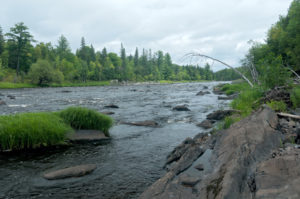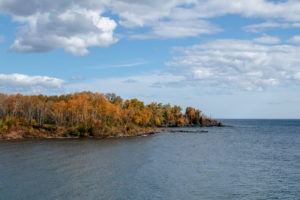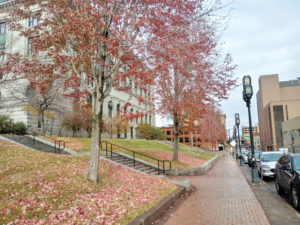Support Equitable Green Space Protection
The benefits of green space in urban environments go far beyond beautifying streets and preventing flood damage. Green space is associated with health from the beginning of human life. In fact, proximity to parks and recreation is associated with increased physical activity. Children who live in neighborhoods with more greenness are less likely to have higher body mass index (BMI) scores than children living in less green neighborhoods. Children living in highly and moderately green urban areas, have lower incidences of asthma compared to children living further from green space and vegetation.
Green space is also known to help provide mental health benefits, as the natural environment has a distinctive capability to restore mental well-being. Proximity to green space has been associated with lower rates of anxiety disorders and depression clusters in neighborhoods within 1km of green space, including lower instances among children and in lower socioeconomic status areas. Moving from less green to more green urban neighborhoods is also associated with long-term mental health improvement.
However, a recent study conducted by a team of researchers at the University of British Columbia investigating the accessibility of green spaces in several U.S. cities by residents of different socioeconomic statuses demonstrated that U.S. residents of lower socioeconomic statuses are much less likely to have access to urban green spaces. This means that these residents are also less able to reap the positive health benefits of close proximity and easy access to green spaces.
In it’s 2035 Imagine Duluth Comprehensive plan, the City of Duluth acknowledges that several city parks or green spaces are inaccessible by residents of some of Duluth’s lower income neighborhoods. For example, Munger Trail is inaccessible from the Morgan Park neighborhood due to a highway and severe elevation changes. Similarly, though connected to several neighborhoods throughout Duluth, the Lakewalk is not equally accessible to all connected neighborhoods due to steep grades, perception of crime, parking problems and limited access to restrooms for some of these neighborhoods. Efforts including improving signage and wayfinding to trailheads and parks, improving accessibility to expensive equipment and increasing education on trail use in those neighborhoods could help increase equitable access to those spaces by all people in Duluth.
In addition, the city could increase the amount of green spaces, thus improving accessibility, by incorporating tax-forfeited land around the city into a greenbelt. Incorporating this land into a greenbelt and maintaining Duluth’s existing forested land will prevent further land degradation. Furthermore, the city needs to emphasize protecting wetlands on high ground to maintain their flood storage capacity, which could help in the event of another catastrophic flooding event. Given that these types of extreme weather events are only becoming more frequent in the face of climate change, increasing Duluth’s green spaces will help make Duluth more resilient, and if Duluth also commits to improving accessibility of these spaces for all, will make Duluth more equitable as well. Act now and send a letter to city officials urging them to support equitable green space protection.
Sources:
Did you take this action? Report it!
Help us show our collective community impact by reporting that you took this action.




